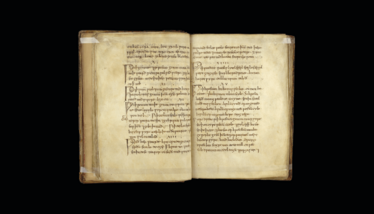Old-Time Medicine
Finding therapeutic potential in the potions of yore

Credit: The British Library Board (Royal 12 D xvii).
Five years ago, a group of academics at the University of Nottingham, UK, faithfully recreated a recipe from “Bald’s Leechbook” – an ancient medical text – to see what would happen. Bald’s eyesalve combines only four main ingredients – wine, garlic, bile from a cow’s gallbladder, and cropleac (an Old English word that ambiguously refers to members of the Allium genus, including onion and leek) – in a method with several specific steps, including letting the mixture stand for nine days (1, 2). In the experiment, rather than applying the concoction to a volunteer’s eye with a feather (as per the original recipe), the group tested the potion against cultures of MRSA bacteria.
And it worked.
The research captured imaginations and sent a shockwave through the scientific community. Could it be a coincidence that the ancient remedy worked?
Since that initial dip into Bald’s world, other researchers have sought to uncover the secrets of the eyesalve, with some attributing its antimicrobial effect to allicin – a compound found in garlic. Now, scientists from the University of Warwick have teamed up with some of the original research team to dig into the science behind the combination of ingredients (3).
Notably, no single ingredient in the recipe was responsible for the antibacterial effect. And no ingredient could be omitted – not even the wine, which is known to have limited antimicrobial activity on its own. They also tested the eyesalve in host-mimicking models – and, yes indeed, Bald’s eyesalve is effective against five bacteria that cause modern-day biofilm infections.
Were such ancient remedies built on science and understanding or simply the result of trial and error – or a little of both? We may never know, but it appears that combinations of natural products deserve more attention. As for Bald’s Leechbook, what other antimicrobial secrets lie within its pages? When it comes to the rise of the superbug, it would be wise to leave no stone unturned.
- F Harrison et al., “A 1,000-Year-Old Antimicrobial Remedy with Antistaphylococcal Activity,” MBio (2015).
- C Lee, “A Blast from Potions Past,” The Medicine Maker (2015). Available at https://themedicinemaker.com/manufacture/a-blast-from-potions-past
- J Furner-Pardoe et al., “Anti-biofilm efficacy of a medieval treatment for bacterial infection requires the combination of multiple ingredients,” Scientific Reports 10 (2020).

Making great scientific magazines isn’t just about delivering knowledge and high quality content; it’s also about packaging these in the right words to ensure that someone is truly inspired by a topic. My passion is ensuring that our authors’ expertise is presented as a seamless and enjoyable reading experience, whether in print, in digital or on social media. I’ve spent fourteen years writing and editing features for scientific and manufacturing publications, and in making this content engaging and accessible without sacrificing its scientific integrity. There is nothing better than a magazine with great content that feels great to read.



















